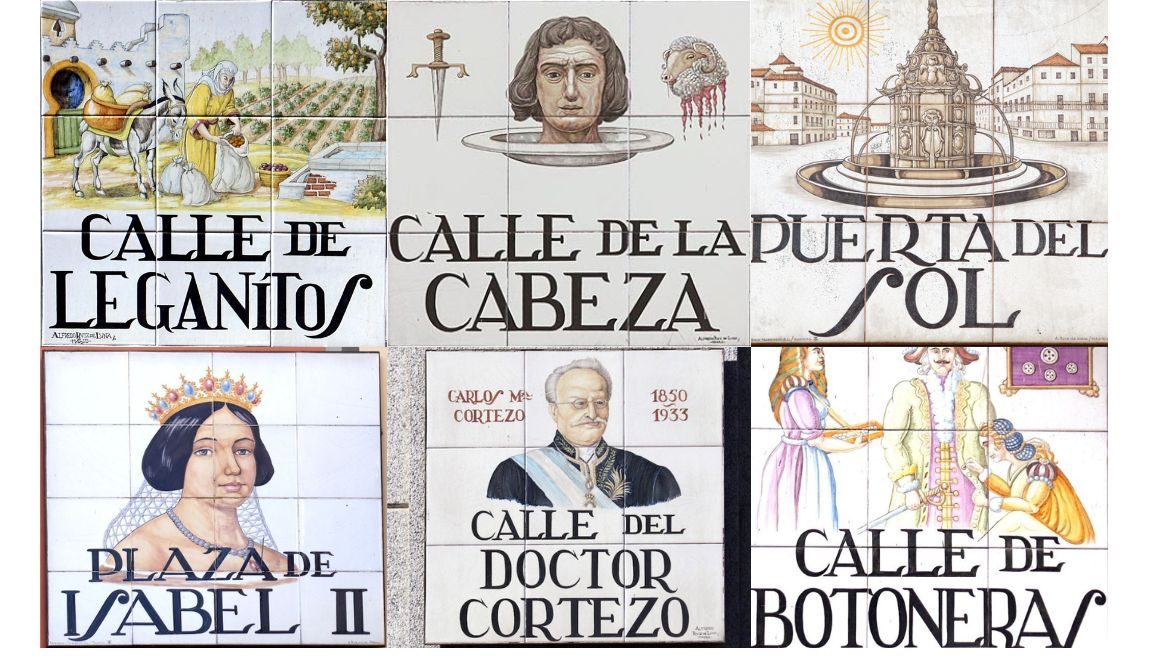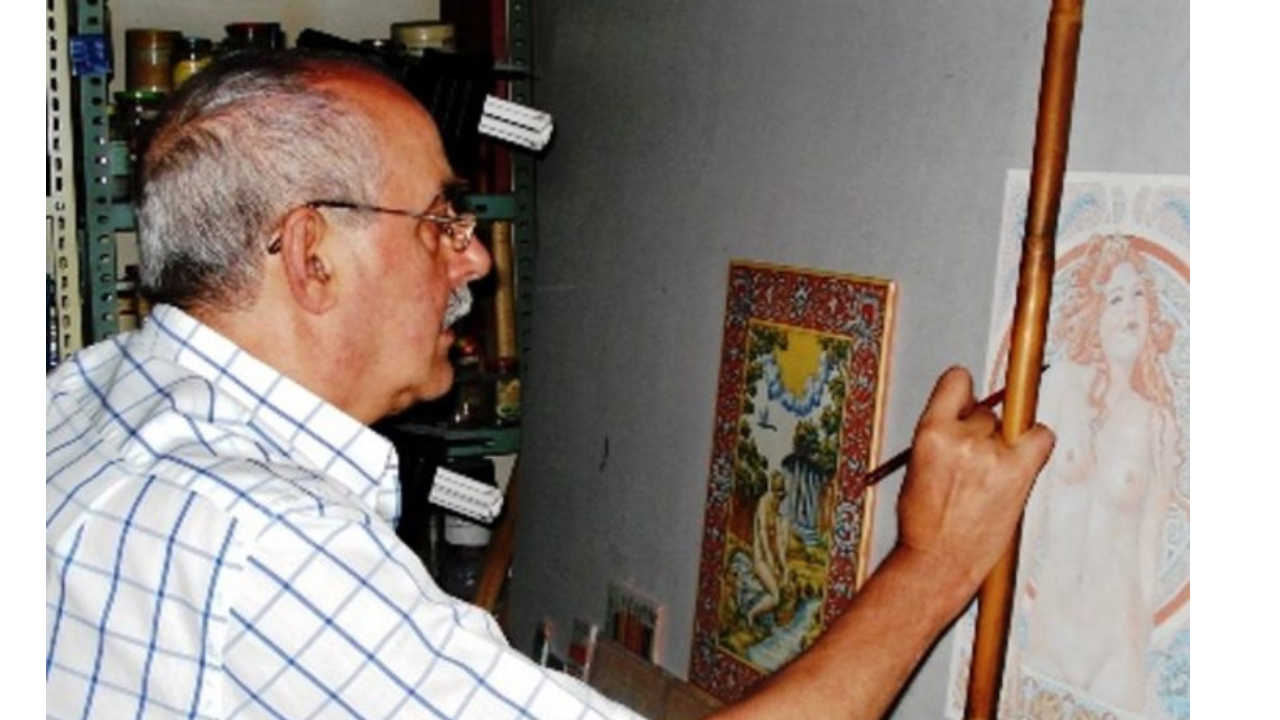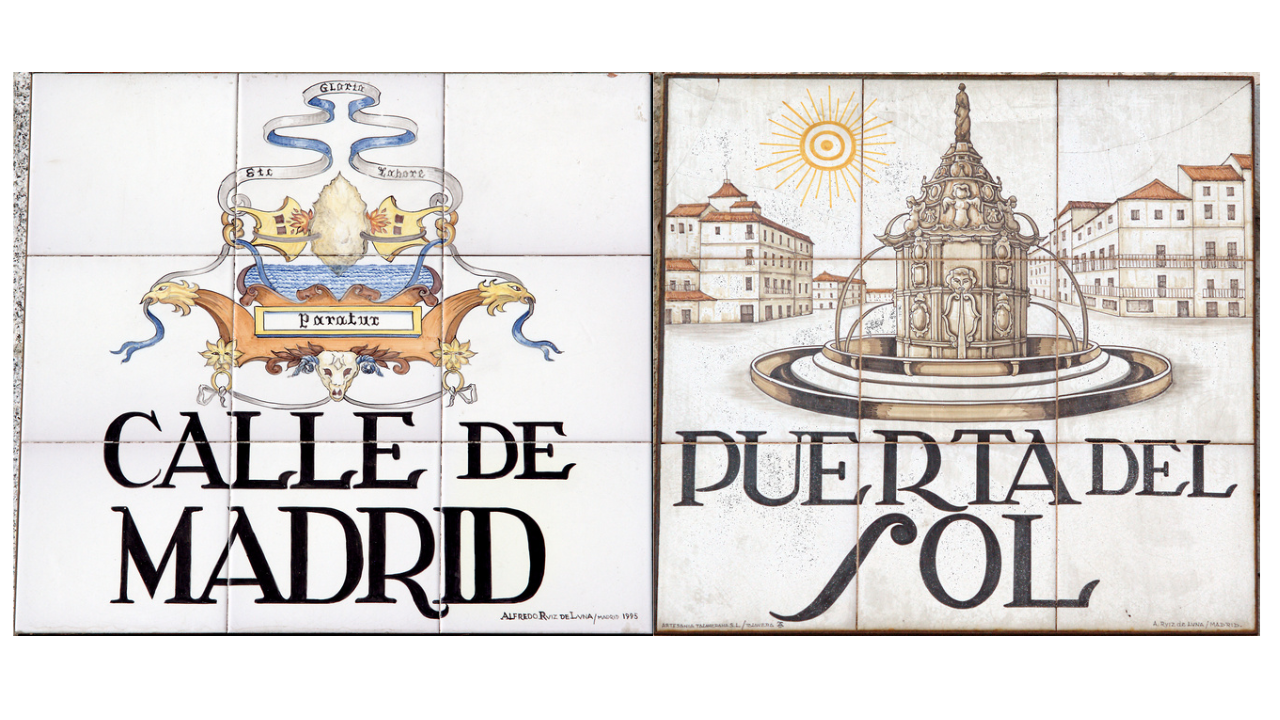

The Urban signage not only organizes public space, it also defines its identity . Street names, how they are presented, and where they are located directly influence the way a city is navigated and remembered. In the case of Madrid, the historic centre has a unique signage system: illustrated ceramic signs, hand-painted, which combine functionality with cultural heritage.
Behind them is Alfredo Ruiz de Luna , a ceramist from Talavera who transformed this part of the street into an artistic project with historical value. This article reviews its history, the development of the commission, the types of existing signs, some technical curiosities and how this legacy continues today.
Alfredo Ruiz de Luna he was born in Talavera de la Reina in 1948. He came from a family with a long history in the world of ceramics. His grandfather, Juan Ruiz de Luna , founded the factory" Our Lady of the Prado ", from which he contributed to the recovery of traditional Talaveran ceramics. This factory was a national reference, even collaborating with artists with great impact in this sector.
Alfredo inherited that trade, but took it further. He studied technical architecture and fine arts, and in the 80s he moved to Madrid , where he opened his workshop in the neighborhood of La Guindalera. There he began to receive important commissions, such as the ceramic decoration of the Las Ventas bullring or the Los Gabrieles tavern, among others.

The idea of creating illustrated ceramic signs for the Madrid street was not new. In the 30s, the City Council had already initiated a Similar project , which was paralyzed by the Civil war . For decades, the streets continued to be marked with blue and white metal plates.
In the 1990s, the council decided to recover that unfinished project, with the aim of providing the centre of Madrid with a More representative signage and decorative. The commission fell on Alfredo Ruiz de Luna, for his experience and for the weight of his surname in the world of artistic ceramics.
Between 1992 and 2005, Ruiz de Luna designed and painted More than 385 ceramic plates . Each one is composed of nine tiles of 20×20 cm forming a square of 60 cm on each side. All the plates were made in a handcrafted , with scenes depicting the origin or meaning of the street name. After his death in 2013, his nephew Juan Ruiz de Luna The work has continued, expanding and restoring the complex.

The ceramic signs in Madrid are not homogeneous. Although they maintain a common visual style, the themes represented vary greatly. They can be classified into these categories:

The ceramic signs in the centre of Madrid not only stand out for their artistic value , but also for its careful preparation and for the numerous Details that surround them. Here are some more interesting facts:
Plates are mainly found in the historic centre of Madrid , in the area between the streets of Alcalá, Gran Vía, Bailén, Gran Vía de San Francisco, Paseo del Prado and Atocha. Streets such as Almendro, Pasa, Espejo, Águila or Plaza de la Paja are especially well-known and photographed examples.
In addition, it is possible Acquire authentic replicas of these signs on this link . The workshop of Juan Ruiz de Luna, Alfredo's nephew, offers reproductions of many plaques from the Madrid street, as well as Custom Orders with names or addresses. They are pieces made with the same traditional techniques and materials, ideal for decorating or as a Unique souvenir .
The ceramic signs in the centre of Madrid are not only used to identify the streets. Also They tell stories , decorate the surroundings and reflect an important part of the city's past. Thanks to Alfredo Ruiz de Luna, what in other cities is a simple sign, in Madrid has become a Cultural element with artistic value. Today, these plates continue to fulfill their original function, but they are also part of the Visual and cultural character of the city .

The Urban signage not only organizes public space, it also defines its identity . Street names, how they are presented, and where they are located directly influence the way a city is navigated and remembered. In the case of Madrid, the historic centre has a unique signage system: illustrated ceramic signs, hand-painted, which combine functionality with cultural heritage.
Behind them is Alfredo Ruiz de Luna , a ceramist from Talavera who transformed this part of the street into an artistic project with historical value. This article reviews its history, the development of the commission, the types of existing signs, some technical curiosities and how this legacy continues today.
Alfredo Ruiz de Luna he was born in Talavera de la Reina in 1948. He came from a family with a long history in the world of ceramics. His grandfather, Juan Ruiz de Luna , founded the factory" Our Lady of the Prado ", from which he contributed to the recovery of traditional Talaveran ceramics. This factory was a national reference, even collaborating with artists with great impact in this sector.
Alfredo inherited that trade, but took it further. He studied technical architecture and fine arts, and in the 80s he moved to Madrid , where he opened his workshop in the neighborhood of La Guindalera. There he began to receive important commissions, such as the ceramic decoration of the Las Ventas bullring or the Los Gabrieles tavern, among others.

The idea of creating illustrated ceramic signs for the Madrid street was not new. In the 30s, the City Council had already initiated a Similar project , which was paralyzed by the Civil war . For decades, the streets continued to be marked with blue and white metal plates.
In the 1990s, the council decided to recover that unfinished project, with the aim of providing the centre of Madrid with a More representative signage and decorative. The commission fell on Alfredo Ruiz de Luna, for his experience and for the weight of his surname in the world of artistic ceramics.
Between 1992 and 2005, Ruiz de Luna designed and painted More than 385 ceramic plates . Each one is composed of nine tiles of 20×20 cm forming a square of 60 cm on each side. All the plates were made in a handcrafted , with scenes depicting the origin or meaning of the street name. After his death in 2013, his nephew Juan Ruiz de Luna The work has continued, expanding and restoring the complex.

The ceramic signs in Madrid are not homogeneous. Although they maintain a common visual style, the themes represented vary greatly. They can be classified into these categories:

The ceramic signs in the centre of Madrid not only stand out for their artistic value , but also for its careful preparation and for the numerous Details that surround them. Here are some more interesting facts:
Plates are mainly found in the historic centre of Madrid , in the area between the streets of Alcalá, Gran Vía, Bailén, Gran Vía de San Francisco, Paseo del Prado and Atocha. Streets such as Almendro, Pasa, Espejo, Águila or Plaza de la Paja are especially well-known and photographed examples.
In addition, it is possible Acquire authentic replicas of these signs on this link . The workshop of Juan Ruiz de Luna, Alfredo's nephew, offers reproductions of many plaques from the Madrid street, as well as Custom Orders with names or addresses. They are pieces made with the same traditional techniques and materials, ideal for decorating or as a Unique souvenir .
The ceramic signs in the centre of Madrid are not only used to identify the streets. Also They tell stories , decorate the surroundings and reflect an important part of the city's past. Thanks to Alfredo Ruiz de Luna, what in other cities is a simple sign, in Madrid has become a Cultural element with artistic value. Today, these plates continue to fulfill their original function, but they are also part of the Visual and cultural character of the city .